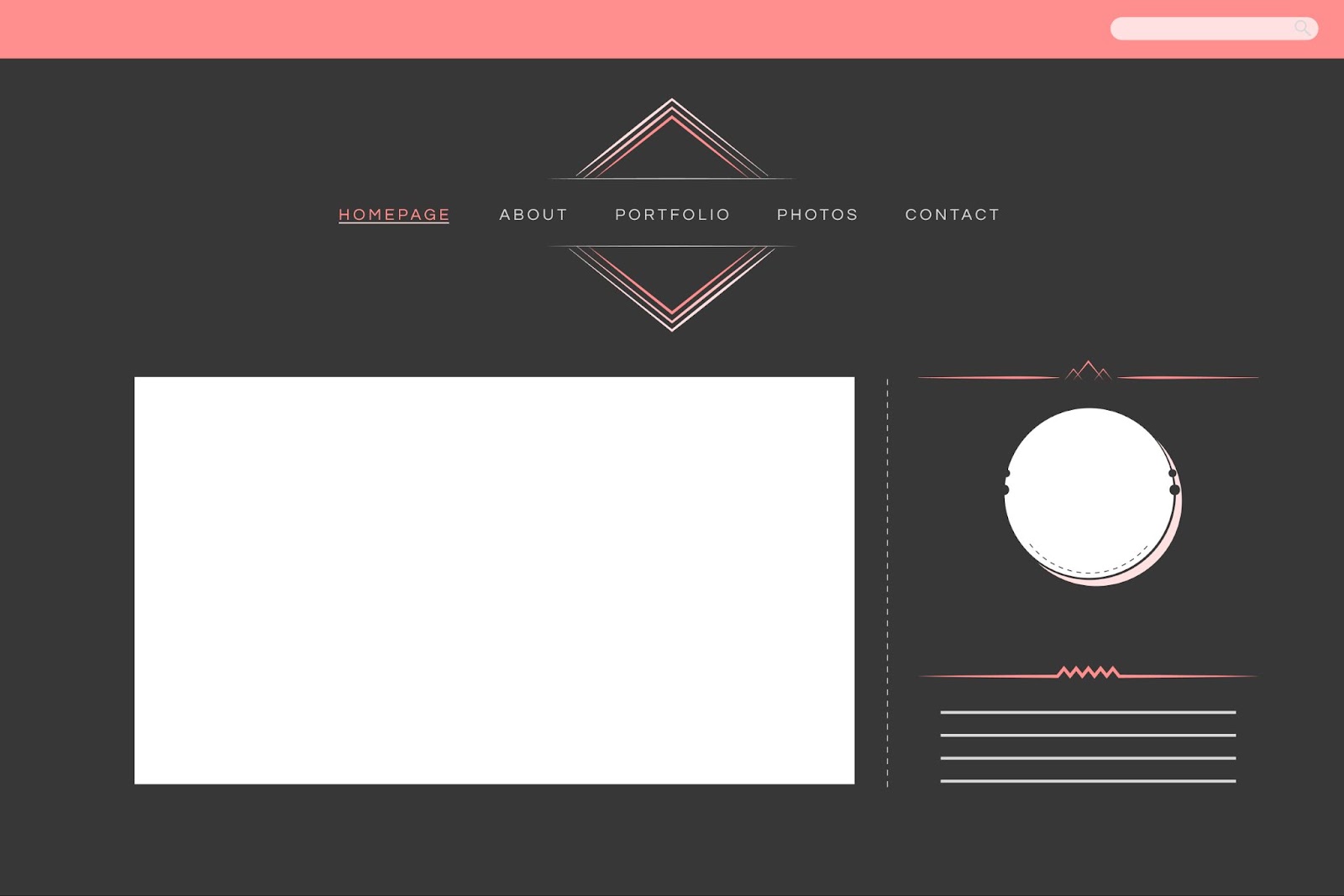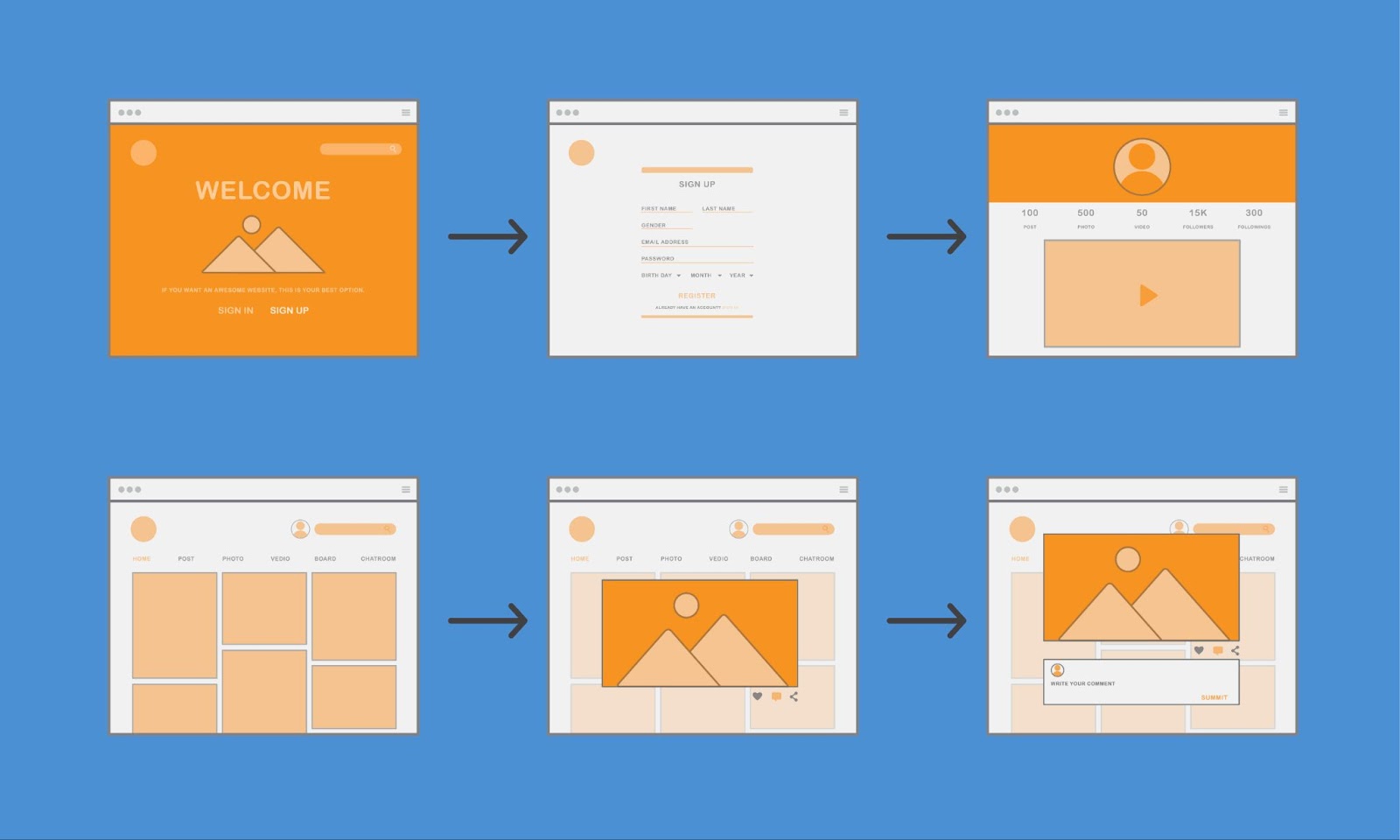
Designing a professional portfolio is essential for anyone looking to showcase their skills, whether you're a creative professional, freelancer, or business owner. Squarespace offers a range of tools and templates that make it easy to build a polished, visually appealing portfolio.
However, to stand out and truly impress, it's crucial to follow best practices in layout, content organization, and visual design.
This article will provide tips for designing a professional portfolio on Squarespace, ensuring your work shines and resonates with your audience.
Introduction to Squarespace
Squarespace is a popular website-building platform that is particularly well-suited for creating professional portfolios. Its user-friendly interface, elegant templates, and built-in features make it an ideal choice for artists, designers, photographers, and other creatives looking to showcase their work online.
Benefits of Using Squarespace
One of the main benefits of using Squarespace is its ease of use. With its drag-and-drop editor and customizable templates, users can quickly create visually stunning portfolios without needing extensive technical knowledge.
Squarespace also offers responsive design, ensuring that your portfolio looks great on any device. Additionally, the platform includes built-in SEO tools and analytics to help your portfolio get discovered and improve performance over time.
Key Features for Portfolios
Squarespace offers several key features tailored to portfolios, including high-quality image galleries, video embedding, and customizable layouts. Creatives can showcase their work in grid or slideshow formats, add detailed project descriptions, and even sell products directly from their site.
With its design flexibility, Squarespace allows users to create unique, professional portfolios that reflect their personal style and vision, making it a top choice for anyone building an online presence.
Planning Your Portfolio Design
Creating an effective portfolio requires careful planning to ensure that it reflects your brand, showcases your work, and engages visitors. Key aspects include defining your brand and style, organizing your content, and selecting the right template for your portfolio.
Defining Your Brand and Style
The first step in planning your portfolio design is defining your brand and style. Consider what message you want to convey through your portfolio and how you want people to perceive your work. Your portfolio should reflect your unique personality and creative vision while staying consistent with your professional goals.
Whether you prefer a minimalistic, modern, or bold design, ensure that your portfolio visually communicates your personal brand. Consistent use of fonts, colors, and imagery helps to create a cohesive aesthetic that leaves a lasting impression on your audience.
Organizing Content
Effective content organization is crucial for ensuring that visitors can easily navigate your portfolio and find key information. Start by categorizing your work into sections, such as photography, graphic design, or writing, depending on your field.
For each project, include a brief description outlining the purpose, process, and any notable achievements. Highlight your best work by placing it in prominent areas, such as the homepage or featured project section.
Additionally, adding a contact page, an “about me” section, and client testimonials can provide valuable context and make it easier for potential clients or employers to reach out.
Selecting the Right Template
Choosing the right template is essential for aligning your portfolio’s design with your brand and content. Platforms like Squarespace offer a wide range of templates designed specifically for portfolios.
Look for a template that supports the type of content you’re showcasing, whether it’s high-resolution images, video, or multimedia projects. A grid layout might be ideal for photographers or designers, while a more text-focused template may suit writers or content creators.
Additionally, ensure that the template is responsive and optimized for mobile viewing, as many users will access your portfolio via smartphones or tablets.
Essential Elements of a Professional Portfolio
A well-designed professional portfolio highlights your skills and work in a way that captivates potential clients or employers. Key elements include high-quality images, detailed project descriptions, and clear navigation to create an effective and user-friendly experience.
High-Quality Images
High-quality visuals are crucial in any portfolio, especially for creatives like photographers, designers, or artists. Your portfolio images should be sharp, well-lit, and professionally edited to showcase your work at its best.
Visuals are often the first thing visitors notice, and poor-quality images can detract from your work’s impact. If you work in a visual medium, ensure that your images are displayed in a format that highlights their detail, such as full-screen galleries or zoom-in features.
Images should also be optimized for web performance, ensuring they load quickly while maintaining resolution, especially on mobile devices.
Detailed Project Descriptions
In addition to visuals, including detailed project descriptions is essential for providing context and insights into your work. For each project, explain your role, the project’s objective, and any challenges you faced.
Discuss the tools and methods you used, along with the results or outcomes. If possible, include metrics or testimonials that demonstrate the success or impact of your work.
This added information not only helps potential clients or employers understand the depth of your experience but also showcases your ability to communicate the value of your work.
Detailed descriptions also improve SEO, helping your portfolio get discovered more easily through search engines.
Clear Navigation
Clear, intuitive navigation is vital for a professional portfolio. Visitors should be able to browse your work effortlessly, whether they’re looking for specific projects or general information about your background.
Use a clean, simple menu structure with well-labeled sections such as “Projects,” “About,” and “Contact.” Implementing categories or filters for different types of work allows users to explore your portfolio more efficiently.
A search function can also be helpful, especially if you have a large body of work. Prioritize ease of use to ensure that visitors stay engaged and find what they’re looking for quickly.
Customizing Your Squarespace Portfolio
Squarespace offers a range of customization options that allow users to create unique and visually appealing portfolios. You can enhance the functionality and design of your portfolio by using custom CSS and JavaScript, as well as integrating third-party tools.
Using Custom CSS and JavaScript
For users who want more control over the design of their Squarespace portfolio, custom CSS and JavaScript provide a powerful way to personalize elements beyond the built-in templates.
By adding custom CSS, you can adjust fonts, colors, spacing, and animations to match your specific branding needs. JavaScript can further enhance the functionality of your site, allowing you to add dynamic features like custom sliders, interactive galleries, or animated elements.
Squarespace offers a Code Injection feature, making it easy to implement these customizations without affecting the overall performance of your site.
Integrating Third-Party Tools
In addition to built-in features, Squarespace portfolios can be enhanced with third-party tools to improve functionality and user experience. Tools such as Common Ninja, Google Analytics, and e-commerce platforms can be easily integrated into your portfolio. For example, you can connect an Instagram feed to display your latest work.
Integrating third-party tools enables you to expand your portfolio's capabilities and create a more interactive, user-friendly experience for visitors.
Best Practices for Portfolio Maintenance
Maintaining your portfolio is essential for keeping it fresh, relevant, and visible to potential clients or employers. Key practices include regular updates and SEO optimization to ensure long-term success.
Regular Updates
Consistently updating your portfolio with new work is critical for demonstrating growth and staying relevant. Regular updates show potential clients that you’re actively working on new projects and refining your skills.
Review your portfolio every few months to replace outdated projects, add recent work, and remove any content that no longer aligns with your current style or brand. Highlighting your best and most recent work helps maintain a polished and professional appearance.
SEO Optimization
SEO optimization ensures your portfolio remains discoverable by search engines. Regularly update your portfolio's metadata, alt text for images, and page descriptions to align with relevant keywords in your industry.
Using SEO best practices helps improve your site’s ranking on search engines, making it easier for potential clients to find your portfolio. Ensure that your portfolio is mobile-friendly and has fast load times, as these are also important factors for SEO.
Conclusion
In conclusion, creating a professional portfolio on Squarespace requires thoughtful design, clear organization, and an eye for detail. This article has provided tips to help you make the most of Squarespace’s powerful tools and templates, allowing your work to take center stage.
By following these guidelines, you can build a portfolio that not only looks stunning but also communicates your skills and creativity effectively, helping you stand out in your field and attract the right opportunities.


